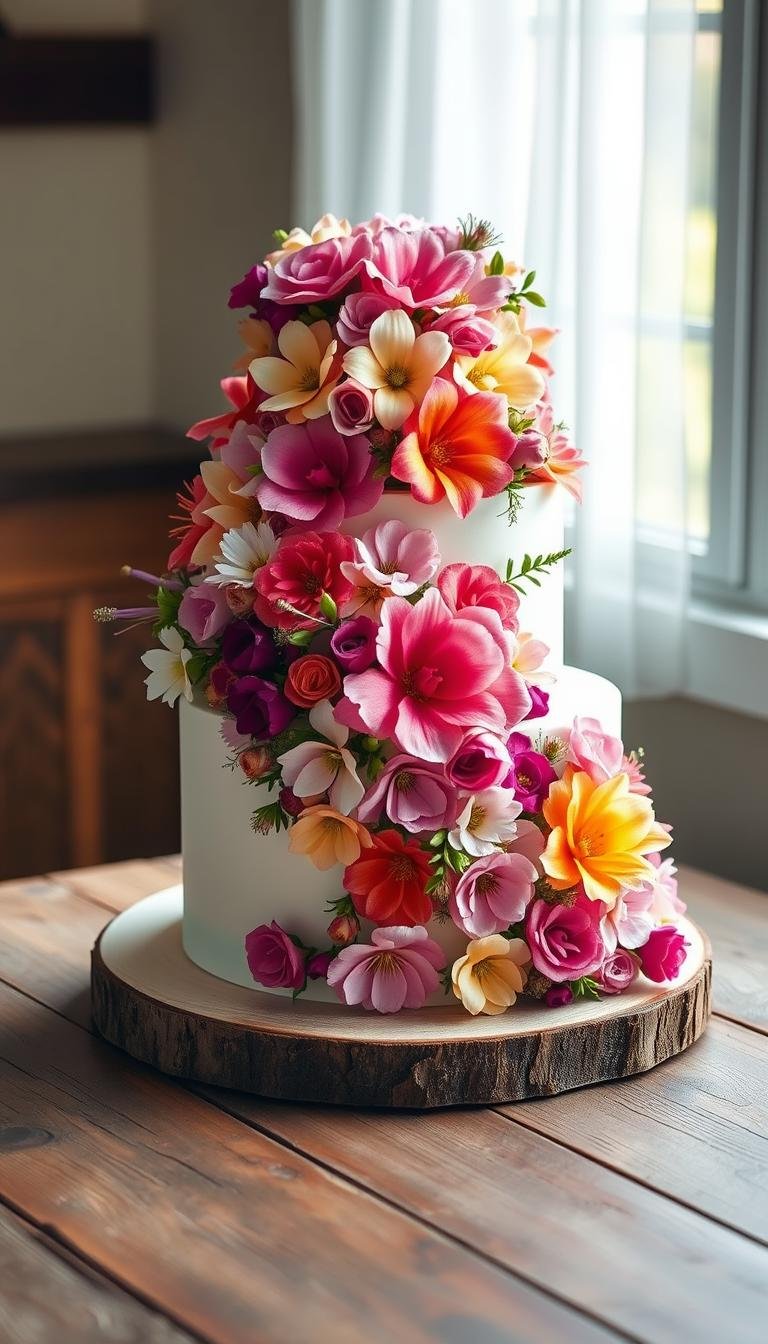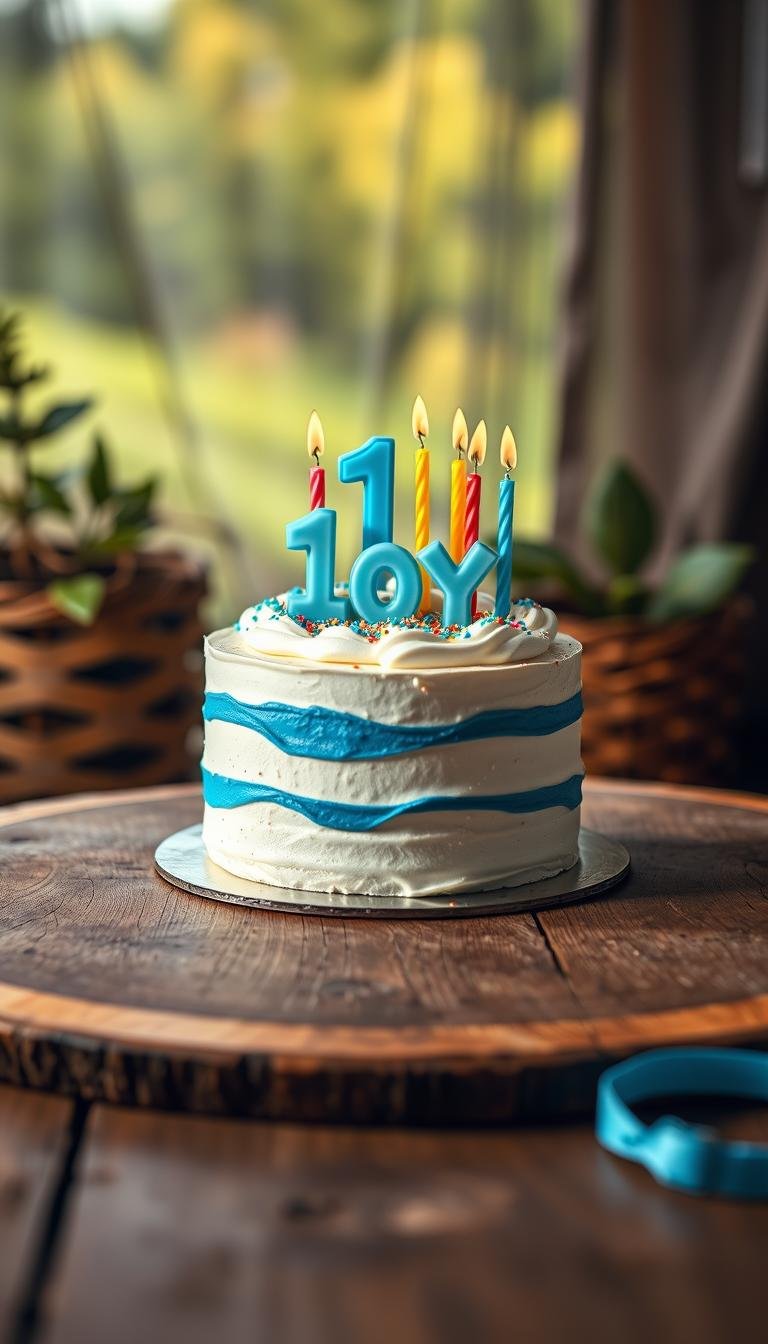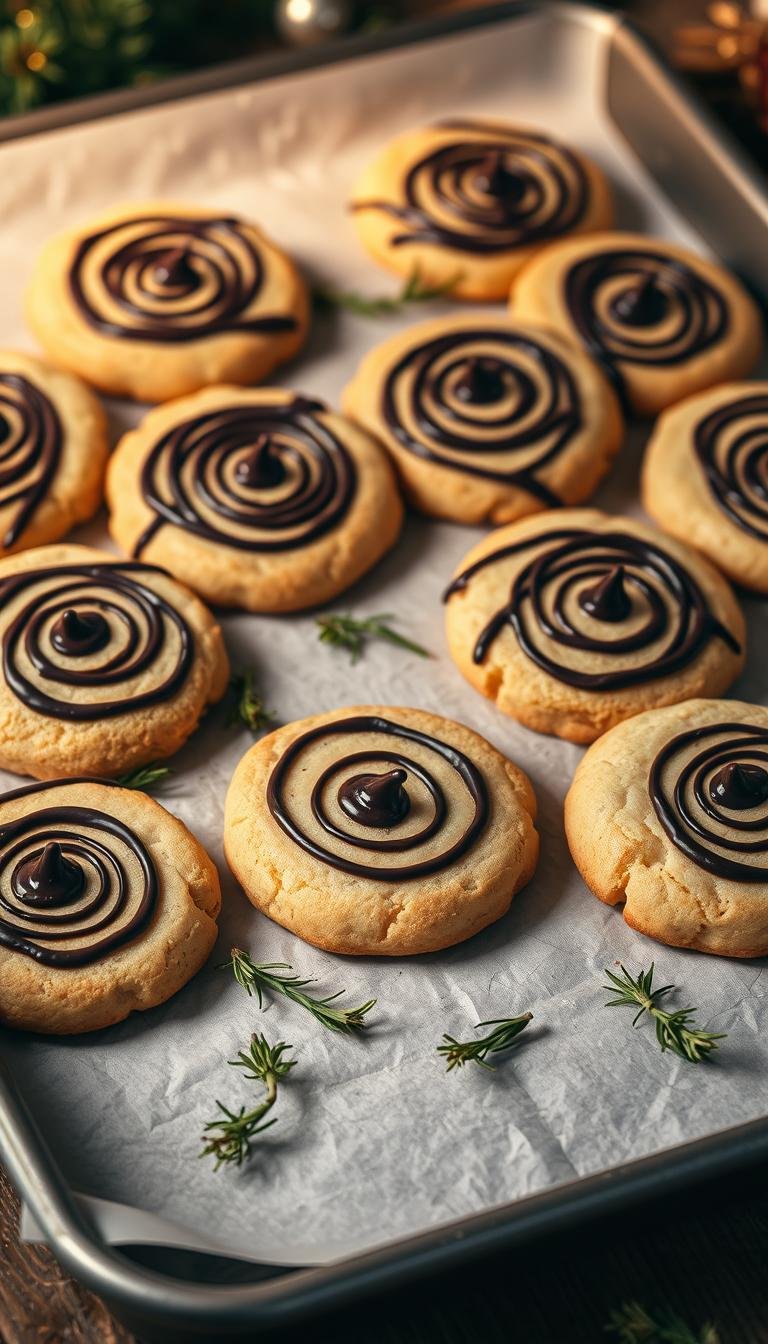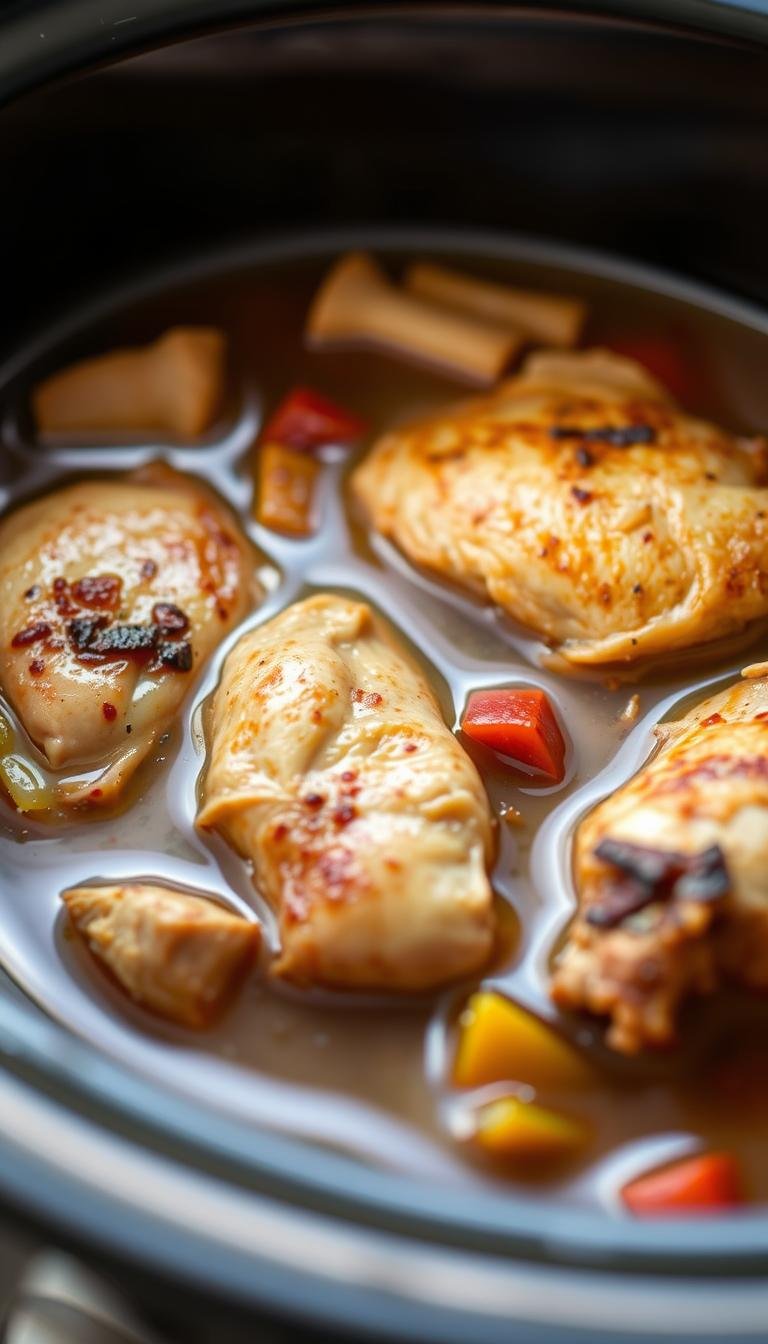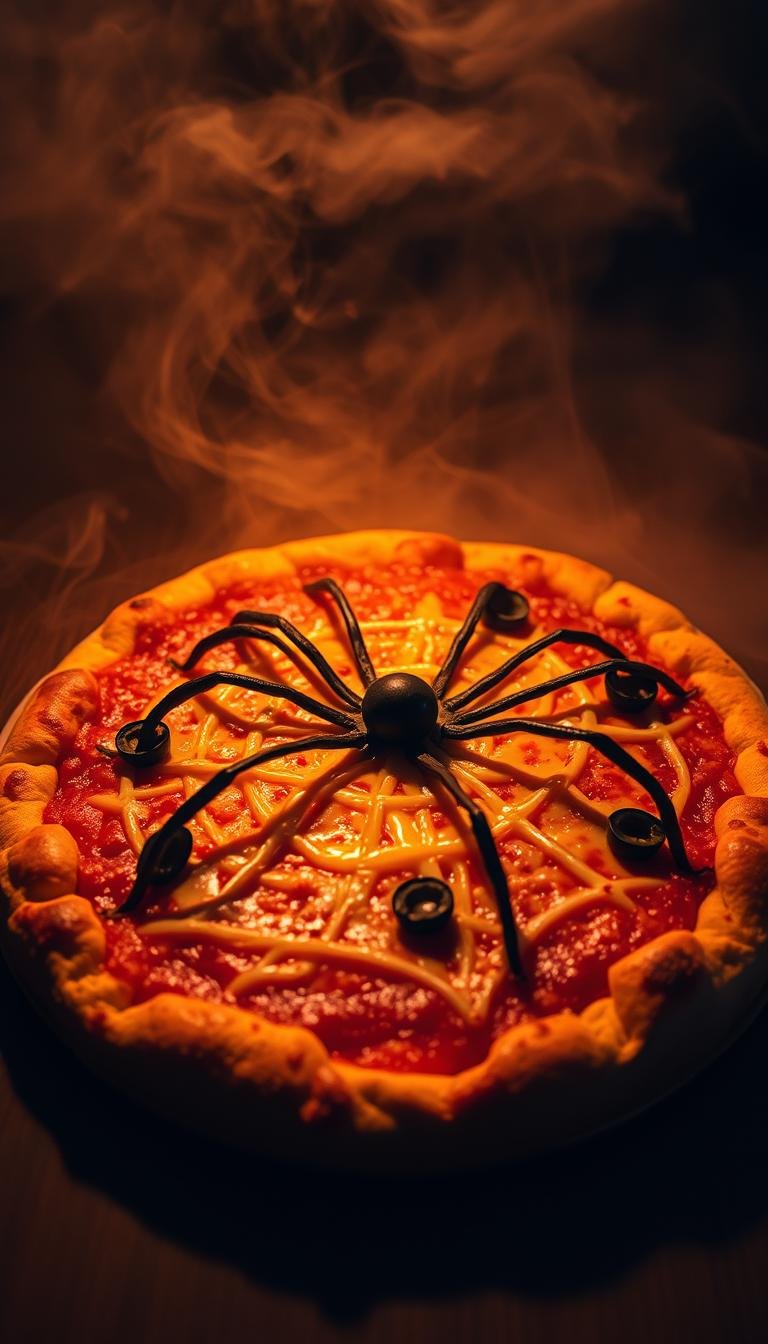10 Stunning Birthday Cake with Flowers Ideas for Your Party
Surprising fact: over 40% of party bakers now choose floral designs to boost visual appeal and guest impressions.
Floral styling instantly raises the beauty of any celebration dessert. From intimate gatherings to large parties, a floral cake makes a strong, photo-ready statement.
Modern designs mix soft buttercream rosettes, crisp fondant cutouts, and realistic gum paste blooms. Brands like Wilton teach no-tip blended flowers and spatula-painted petals, while Make-Fabulous-Cakes shows royal icing and basketweave arranging tips.
Vegan options are rising too — Crave by Leena offers plant-based rosette and drip styles that prove taste need not suffer for looks.
This guide promises ten focused sections covering techniques, seasonal palettes, quick party-friendly flourishes, and clear advice on when to DIY versus order. Follow along to turn inspiration into a stunning, stress-free centerpiece.
Key Takeaways
- Floral designs deliver instant visual impact for any celebration.
- Multiple techniques suit different skill levels and budgets.
- Buttercream florals combine beauty and great taste.
- Vegan floral cakes offer inclusive, delicious options.
- Planning flowers ahead saves time on party day.
Why flower cakes make every celebration bloom
A few well-placed blooms change how people see and taste a dessert at gatherings.
Beauty often leads the first impression, but taste keeps guests coming back. Wilton notes easy techniques—rosettes, mums, and pull-out stars—that add texture without complex tools. Make-Fabulous-Cakes shows how buttercream or royal icing can form soft petals, while fondant and gum paste make sculpted details.
Buttercream remains a top choice. It dyes evenly, pairs with most flavors, and complements moist layers so the decorating approach improves both flavor and appearance. Floral designs scale well: simple blooms suit small rounds, while abundant arrangements work on tiered desserts for larger parties and birthdays.
- Quick wins: rosettes and leaves for fast decorating and low time investment.
- Design impact: palette and bloom size change perceived height and texture.
- Safety: use non-toxic stems or barriers if using real flowers.
| Technique | Look | Best for |
|---|---|---|
| Buttercream rosettes | Soft, textured | Casual parties, quick prep |
| Royal icing | Crisp, delicate | Detailed piping, small tiers |
| Fondant & gum paste | Sculpted, clean | Formal events, long prep |
Birthday cake with flowers: the core styles to know
Pick a decorating route early—each method affects prep time, appearance, and how long decorations last during parties.
Buttercream flower cakes for a soft, classic look
Buttercream flower cakes use rosettes, drop flowers, and leaves to create warm, textured finishes. These techniques need minimal tools and work well for casual gatherings.
Fondant and gum paste florals for clean, sculpted designs
Fondant lets you roll roses and cut precise petals for sleek, modern cake designs. Gum paste adds lifelike veining and thin petals but takes more time and practice.
Pro tip: make fondant or gum paste florals days ahead for faster assembly and firmer decorations.
Real blooms and safe use on cakes
When using real blooms, choose non-toxic varieties, wrap stems, and use flower picks or food-safe barriers. Place fresh stems on buttercream just before serving to keep them vibrant.
- Use star, leaf, and petal tips for quick icing texture and layered dimension.
- Try a basketweave side to form a floral “container” for piped blossoms.
- Match design to the event: buttercream for rustic-chic, fondant for polished affairs, gum paste for dramatic realism.
| Style | Look | Best for |
|---|---|---|
| Buttercream | Soft, textured | Casual parties |
| Fondant | Clean, modern | Polished events |
| Gum paste | Realistic, detailed | Showstopping centerpieces |
Showstopping buttercream flower ideas that wow
A simple ring of piped rosettes instantly lifts a plain dessert into centerpiece status. Pairing rosettes with pull-out stars creates instant texture while leaving a clean center for a message or a small topper.
Ring of rosettes & pull-out stars: pipe a top ring, add star accents around the edge, and finish with leaves to add depth. This layout works well for a rosette cake or layered cakes at a spring party.
Fall rosette color strategy: choose marigold, rust, burgundy, and forest green for contrast. Wilton and Crave by Leena inspire this palette for seasonal impact and rich, warm tones.
Painted white roses: use a tapered spatula to “paint” petals in buttercream. This method makes airy rose motifs without complex piping bags.
- Try Russian piping tips for instant full blooms when time is tight.
- Chill between layers and pipe rosettes on a chilled surface for crisp edges.
- Mix large rosettes and smaller drop flowers to guide the eye.
| Technique | Best use | Quick gain |
|---|---|---|
| Rosette ring + stars | Top-edge texture | Fast, polished look |
| Painted petals | Elegant white rose motifs | No special tips needed |
| Russian tips | Full blooms quickly | Instant wow-factor |
Simple floral cake designs for beginners
Beginner decorators can build lovely floral looks using just tinted buttercream and a flat spatula.
No-tip blended buttercream with spatula-made florals
Wilton’s no-tip blended buttercream uses spatulas to swipe tinted icing into organic petals and leaves. This no-fuss approach keeps tools minimal and looks painterly.
Work in thin layers, swipe outward, and blend two nearby shades for depth. Chill between passes to keep edges crisp.
Sheet cake covered in pink and purple rosettes
A Pink and Purple Rosette sheet project is a great starter. Pipe large and small rosettes corner to corner, then fill gaps with stars and leaves.
Practice rosettes on parchment, premix a spring palette, and reuse scraped icing to reduce waste. Pair this cake with matching cupcakes for a coordinated dessert table.
- Crumb-coat, chill, and work in sections for clean texture.
- Use a small rose accent and a few leaves to elevate a minimal design.
- Place a simple topper only after chilling to preserve rosette definition.
| Project | Tools | Best for |
|---|---|---|
| No-tip spatula florals | Spatula, tinted icing | First-time decorators |
| Pink & purple rosette sheet | Piping bag, round tip, star tip | Party servings, spring events |
| Cupcake bouquet practice | Russian/Bloom tips | Practice and extra servings |

Artful fondant and gum paste flowers for crisp details
Crisp fondant swags and delicate gum paste blooms offer a refined route to editorial-style celebration desserts.
Wilton’s Fondant Flower Cake shows a side swag of petals and leaves that read modern and clean. Cut petals and leaves in varying sizes, shape slight curves, then assemble them down one side for a sleek silhouette.
Make pieces days ahead so they firm and hold shape. This saves time on the event day and speeds assembly for any occasion.
Fondant swag of flowers and leaves made ahead
Use cutters or hand-roll simple fondant roses. Layer petals from small to large and attach with edible glue or stiff royal icing.
Keep colors minimal: two main hues plus a neutral leaf tone. A matte finish reads contemporary; a light shimmer dust adds subtle elegance.
Learning realistic gum paste blooms: time and payoff
Gum paste dries thinner and stronger than fondant. Practice rolling thin, using veiners, and drying on formers to master peonies, lilies, and roses.
Expect a learning curve. Invest time and wire petals for wired designs; use straws or picks to keep wires from touching the dessert directly.
- Mix large statement blooms with small fillers for balanced proportions suitable for a wedding or milestone.
- Secure pieces with melted chocolate, edible glue, or royal icing for long-lasting hold.
- Practice one flower at a time; build a set of cutters and veiners to speed future projects.
| Material | Best use | Drying & strength |
|---|---|---|
| Fondant | Soft roses, simple petals, quick swags | Gentle, slightly flexible |
| Gum paste | Thin, wired petals; lifelike blooms | Dries thin and strong |
| Hybrid (fondant + gum paste) | Faster prep, stronger finish than fondant alone | Moderate firmness |
Fresh and seasonal themes: spring to fall
Choosing blooms tied to the season makes a dessert feel fresh and intentional. Use spring and fall palettes to guide color, flavor, and display for memorable parties.
Spring ideas draw on Wilton’s Tulip Cake, Pretty Poppy Cake, and Lovely Lilac Flower Cake. Pick tulips, daisies, lilac, or poppies in pastels or garden brights.
Arrange blooms as a crown, a side cascade, or clustered bouquets. Small blossoms frame a message; large blooms set the focal area.
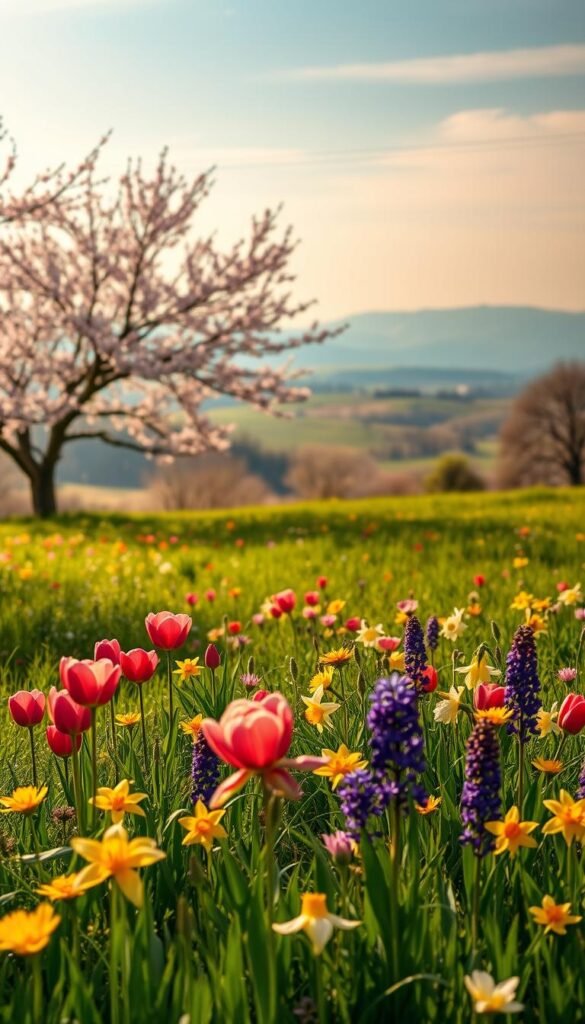
Fall themes use mums, leaves, and deep tones. Think burnt orange, wine, and mustard. Anchor the design with a rosette cake band for fast, bold coverage.
“Ring of Rosettes and Fall Flowers Buttercream Cake show how warm hues and mums evoke autumn.”
- Use sage green in spring and olive in fall to tie petals and leaves together.
- Choose smooth sides for modern looks or light spatula strokes for rustic texture.
- Add sugar pearls in spring; try subtle metallic accents for fall shine.
| Season | Key blooms | Flavor pairing |
|---|---|---|
| Spring | Tulips, daisies, lilac, poppies | Citrus, berry |
| Fall | Mums, maple leaves, deep roses | Spice, caramel, chocolate |
| Design tips | Crowns, cascades, clustered bouquets | Leave negative space; coordinate party decor |
Quick note: balance is key. Leave intentional negative space so the flower cake reads elegant, not crowded. Seasonal palettes make coordinating candles and table florals easier for a cohesive birthday cake presentation.
Party-ready flourishes: cake toppers, numbers, and cupcakes
Quick decorative touches turn a simple dessert into a polished centerpiece for any gathering.
Blooming number cakes for any age
Wilton’s Blooming Number Birthday Cake shows an easy route: use a shaped pan or cut a number from rounds, then pipe rosettes, mums, and leaves to cover the surface. Cut templates help if you lack a pan.
Floral drip and topper combos for fast decorating
Apply a controlled drip, cluster a few buttercream blooms near the edge, and add a minimal cake topper for instant polish. Choose an acrylic or cardstock topper that won’t sink and place it after chilling.
Cupcake bouquets and giant cupcake blooms
Turn a giant domed pastry into a bouquet by covering it in piped blossoms. Crave by Leena’s giant cupcake method uses layered rosettes for an easy, sliceable centerpiece.
For flexible serving, group piped cupcakes into a bouquet or an “M” monogram layout for big impact. Secure toppers, chill before transport, and match palettes across all desserts for a cohesive design.
DIY vs. order-ready floral cake designs
Choose DIY when simple buttercream techniques give the result you want and you have the time to practice. Wilton’s no-tip spatula florals and a sheet of rosettes are ideal starter projects. A quick trial on cupcakes helps refine your recipe and pacing before the main event.
When to bake at home and simple tips
Plan your timeline: bake, cool, assemble layers, crumb-coat (30–60 min), chill (30–60 min), pipe decorations (30–90 min), chill again. Keep buttercream chilled for clean edges and work in short sessions to avoid mistakes.
Ordering elegant designs for weddings and large events
Order when guest counts, tiers, or gum paste realism exceed your comfort level. Professional bakeries (and vendors like Crave by Leena) handle dietary needs, color matching, and topper sourcing. Give a clear brief: swatches, photos, servings, and lead time.
- DIY benefit: lower cost and hands-on control for casual celebrations.
- Pro benefit: reliable finish, transport, and advanced techniques.
- Practical tip: make fondant or gum paste pieces ahead and use food-safe barriers for real blooms.
Conclusion
Choose one or two ideas, pick a trusted recipe, and commit to a simple plan. This guide pulls practical techniques from Wilton, Make-Fabulous-Cakes, and Crave by Leena so you can decide between approachable buttercream methods or sculpted sugar options.
Focus on fundamentals: smooth sides, balanced blooms, and chilled buttercream keep results clean and reliable. A well-placed topper or a single rose focal point elevates the look without extra fuss.
Scale servings with cupcakes or a cupcake bouquet to mirror the main design and extend service. Plan decorations ahead, allow chilling time, and leave space for candles or an inscription so the final dessert feels intentional.
Whether you choose rustic spatula florals or crisp fondant swags, thoughtful choices and basic techniques deliver a floral cake that offers both beauty and great taste for the birthday celebration.
